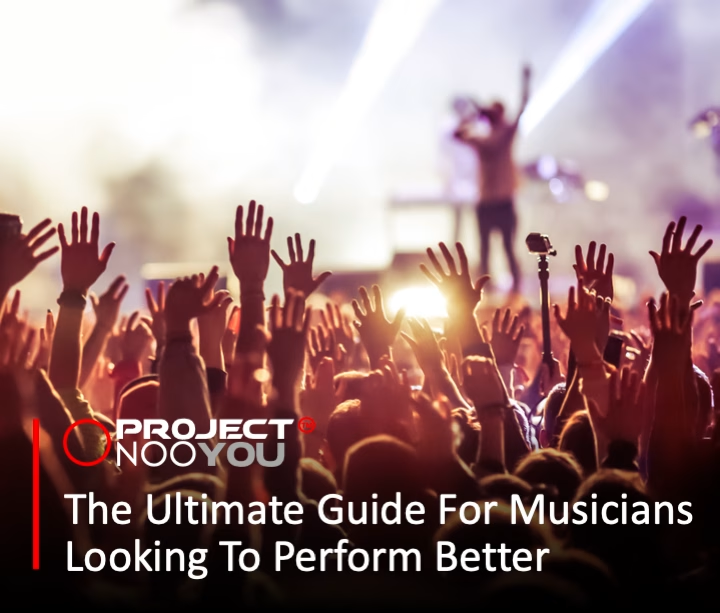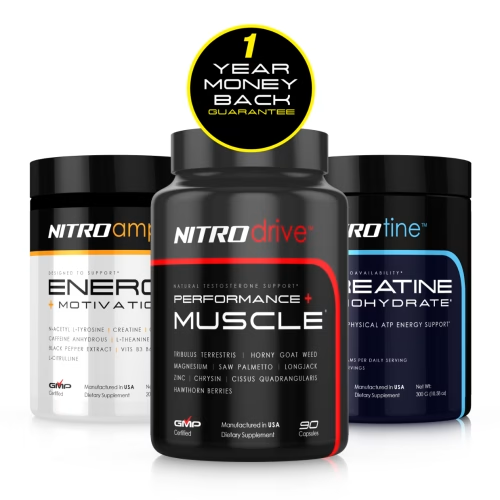FREE US Shipping On Orders Over $99

THE ULTIMATE GUIDE FOR MUSICIANS LOOKING TO PERFORM BETTER
A complete digital guide covering the musicians mindset, how to get more from your practice and how to prepare for a live performance.
The team at Noosician have pulled together a checklist to help you become a better musician.
Firstly, this document is for beginner musicians who are still learning how to play music live, possible even preparing for their first ever gig.
You might have been a late starter, not picking up music until your late teens, you might have joined a band in college or picked it up as a hobby to relax after a hard day’s work.
You’re now entering gigging environments, brushing shoulders with people that came out of the womb shredding on guitar and singing like Aretha Franklin.
INSERT IMAGE
We get it, it’s daunting! And you’re not alone.
Some of the team here at Noosician were just like you, they picked up music in their late teens and some even later than that.
They found themselves looking for something to help them catch up with the musical prodigies that they now share a stage with.
This is part of the reason why Noosician was born, to accelerate the learning of budding musicians.
Secondly, this checklist is here to help the more experienced musician who is paralysed with fear, anxiety or just a complete lack of motivation.
It’s so common for talented musicians to never get the spotlight they deserve because when they get on stage, their brain scrambles and body freezes.
No matter how much they were shredding in the basement, fear of performing in front of an audience keeps those beautiful sounds in the basement.
While some of you just don’t have the energy to perform like you used to.
How could you? You now have a family and work 40+ hours a week draining all your energy.
But, again, we promise you, you are not alone.
A survey of a group of 2000 professional and amateur musicians found that one out of four of us have suffered from a serious case of stage fright.
One of our team members that has been with us from the very start of our company’s journey is THE most talented drummer I’ve ever heard play.
You would never know though, before he started taking our product, on stage he would play like a kid does in kindergarten.
If he managed to move his limbs at all.
That problem is now behind him and can now put his talent to good use, we lose him for half of the year as he now tours as a successful session musician for some big names.
INSERT IMAGE OF NOOSICIAN
Having people in our team that face the same problems that you do has really helped us develop a product to fix these problems.
However, we didn’t want to stop there.
We wanted to create this e-book to give musicians like you something to rely on and to give you some tools to enable you to become a better all-round musician.
I am aware that all of you are super-talented.
But I also know that if you are reading this you are looking for something to give you an extra edge, something to help take your game to the next level.
In this guide we are going to cover the musician’s mindset, practice, preparation and performance guideline.
I believe if you follow what is in this manual and invest in your future with our musician’s nootropic brain supplements…
INSERT IMAGE
You will stop hiding at the back of the stage and start standing your ground at the front – which is exactly where you belong.
“Emancipate yourselves from mental slavery. None but ourselves can free our minds” – Bob Marley
The Musicians Mindset
Creating music that is going to give people goose bumps, melt their hearts or make them jump around like crazy is not easy.
It takes hours of practice, writing, mixing and recording before you maybe have something that is going to speak to your fans and make you famous.
To help you put in the hours that is required to become a successful musician you need to train a musician’s mindset.
INSERT IMAGE
A Musicians Growth Mindset
What comes before a growth mindset, is a ‘fixed mindset’.
You could have one right now and if so, it’s a big factor in why you are not being the best musician you could be.
A fixed mindset tells you that people are born talented and they have never had to work to succeed, they’ve always been like that.
They are the way they are and I am the way I am, and that’s it.
Whereas the growth mindset is a belief that you can cultivate talent and intelligence through hard work, experimentation, learning and persistence.
Every musician that wants to be successful and take their performing to the next level needs to get into a growth mindset.
Unfortunately, lots of musicians have a fixed mindset, and have a belief that they only have a limited amount of talent and the mistakes they make on stage or during practice means they are not good enough.
But we are going to change that right now, mistakes and risks are what make great musicians.
Do you think Hendrix or Lennon where afraid to make mistakes as they set out to define genres?
It’s all about how you look at your problems and overcome them.
Next time you find yourself thinking with a fixed mindset, try to replace it with a growth mindset statement and reap the rewards this brings.
| Instead of… | Try… |
| I’m not good enough to perform there | I will practice 3 extra hours every week until I am good enough to perform there |
| I give up… | I’m going to try a different approach |
| This song is too hard | This song is going to take longer to learn |
| I’ll never be as good as [favourite musician] | I am going to create my own sound |
| I am not talented enough | What can I do to get better? |
| I’m not even going to try that | How long will it take me to learn this? |
| This song is easy to play | What’s my favourite song and how can I learn it? |
| I’m not good enough to improvise | I’m going to attempt a solo in this week’s practice |
| I’m not a good song writer | I’m going to learn how to write songs by reading more lyric books |
“Whether you think you can, or you think you can’t… You’re right”
INSERT IMAGE
Adopting a growth mindset is all about asking for help, being patient with results, not being afraid to make mistakes, finding new ways to learn and asking yourself ‘what can I do to get better.
Leave behind the fixed mindset which allows you to give up, not try and avoid a challenge far too easily.
Developing a growth mindset is the first step to become a better musician.
You will learn faster and have a much better relationship with music when you come across challenges.
Accepting some things will be hard and will require effort to master is just part of the musician’s journey.
Visualizations and Externalization – How to trick the mind and reduce anxiety
Many of you reading this will have experienced stage fright to some degree, it might even be the sole reason you were looking for a nootropic.
Anxiety is hard to understand and even harder to overcome.
75% of the US population have a fear of public speaking and 90% of this population have suffered from stage fright or have some level of social anxiety.
Non-musicians often think that musicians are super confident people that naturally take to the stage.
But you and me both know that we are no different to the general population.
However, it is true that some musicians have learned to overcome the fear of standing on stage.
For those of you that haven’t learnt this skill yet, we are going to outline how visualization techniques can help you reduce anxiety and become a better performer.
Some simple practices will enable you to become the confident front of stage performer you have always wished to be.
“May the dreams of your past be the reality of your future.” – Jimi Hendrix
INSERT IMAGE
So, what is visualization?
Visualization, when done correctly, involves vividly imagining yourself carrying out an activity with positive outcomes.
You can do it with a first-person view which involves you looking through your own eyes as you go through the imagination.
Or you can view it from a third person point of view where you are sitting in the audience watching yourself on stage.
Either can be effective and we recommend you try both to see which one works best.
If you have time to go through both a first and third-person scenario, and you like both methods, this will really help you visualize the performance from all angles.
The theory behind visualization is that by doing this you will ‘trick’ your brain and your body into reducing anxiety and fear.
It tricks your brain into thinking ‘we have done this before, and you were successful at it’.
“Our intention is everything. Nothing happens on this planet without it.” – Jim Carey
There are four basic steps to successful visualization:
This is your chance to drop all of the outside pressures and stresses that are making you nervous for your performance.
Forget about practice, forget about work pressures and family life just for the next 10 minutes.
It is important you don’t rush this part and take as long as it takes to quiet the mind.
Closing your eyes and taking long, deep breathes through the nose and out of your mouth is often helpful.
The more you can focus on your breathing rather than your thoughts, the quicker your mind will slow down and clear out.
Now your mind is quiet it’s time to start conjuring up every detail you can imagine.
Start with the journey there, what car will you travel in? Who will be driving? What route will you take? What time will you arrive?
Then, what entrance will you take to the theatre? Unload all of the gear, go through sound check, walk around the stage.
Think about who will be backstage and who will be watching from side stage and put them there in your mind.
Now imagine the crowd are there, put the guitar strap over your head or grab the mic and begin going through your set.
Once you’ve thought about all of the details you should go through it again and make it more sensual.
Try and feel the excitement, the adrenaline rush and the goose bumps raising on your arms.
What does it smell like, how warm is it in there?
If you start to feel your heart pounding, your breathing getting faster, rather than letting the nerves get the better of you, embrace them and get used to the energy that comes from them.
This is the most important step.
Once you’ve gone through the details and felt the emotions of your performance it’s time to visualize the ending.
Picture yourself completing the guitar solo, hitting that high note or observe the entire band go through an awesome jazz improv.
Finally, observe the crowd’s reaction, see in your mind how they are jumping up and down and singing along with you.
The more real and vivid you can make this in your imagination the more your brain is going to think that you have successfully done this before.
Squashing your nerves and anxiety.
“You have to keep your vision clear cause only a coward lives in fear” – Nas
If you’ve never practiced visualization before it can seem unnatural at first.
I know I personally put it off for years because I thought it was something that only BS hippies did.
But the more I looked into it, the more I realised it’s a tool and a practice used by many great musicians, businessman and successful people.
It’s a great exercise for any musician, but especially for those of you who are suffering from performance anxiety.
Yes, it might feel silly at first, but if it can help you to climb up on that stage without jelly legs to showcase your talent to the world…
Then surely it’s worth it?
How to get more from your practice
Now you have the right mind set its time to start getting more out of your practice sessions.
Whether you are a solo artist or part of a band, being able to optimise your practice time will enable you to take your performance to the next level.
The more time you put in before the, the more confident you will be when the time comes to perform.
For beginners’ practice is your chance to sharpen your skills and become a more proficient musician.
For musicians with anxiety issues practice is your chance to become really comfortable with your performance so that there isn’t any need for your mind and body to get nervous. It’s second nature.
“The most crucial ingredient by far for success in music is what happens in the practice room.” – William Westney
Insert image
Here’s a framework the team at Noosician have pulled together to help you get the most out of your practice sessions.
We’ve been following these steps for some time now and can really feel the benefits in our skill sets and our overall confidence.
If you follow these steps for every practice session, you’ll notice the difference too.
This will vary for every individual however it is important you understand what you need from your practice environment to enable you to practice better.
Do you need to find a quiet room away from distractions to help you practice?
If you play classical music make this room calming, if you play jazz make it funky.
Having an environment that reflects your music will make you play better.
If you’re in a band do you have enough space to move around or could you build a make shift stage to make practice feel more real?
Do you have enough amps, leads, effects pedals or microphones?
Having everything you need means there isn’t anything from stopping you practicing, no excuses of ‘I can’t because of X, Y, Z.
I get it, it’s not very rock ’n’ roll to have a schedule for your music practice.
However, having a written down schedule and structure for your practice sessions is going to allow you to optimize and get the most out of them.
Breaking your practice down into defined segments makes it much more likely you will actually warm up, practice your scales and learn the new song you wrote over the weekend.
Each session should have the same framework and have a defined goal.
Here’s something you can use to help.
| Music Practice Log | |
| Practice Goal: | |
| Warm up (stretches, breathing exercises) | 3-5 mins |
| Practice Scales | 5-10 mins |
| Analysis and talk about new piece/song | 10 minutes |
This might seem obvious but how else are you going to hear what you sound like?
It’s very easy to kid yourself that you’ve ‘got it’ after one or two times going through a song.
More often than not there will be things that you can improve on and it’s much better that you see it first before your audience does.
It’s also a great tool to show your band mate who can’t take criticism what to improve on…
The camera never lies!
If you have the budget getting a high definition camera and quality microphone to hear the detail in your music would be best.
However, if all you have is a working iPhone this will do the job as well.
You’ll learn so much from recording you practice sessions from timing to harmonies and even style.
Nothing can hide from a recording and seeing yourself from the audience’s point of view will help you visualize performances in the future.
Make some notes throughout your session on your agenda sheet and go over these at the end of practice.
If there were any problems or areas for improvement that came up while you were practicing discuss them and then allocate some time to go over these at home before your next session.
You could even put it on next week’s agenda as the first thing after a warmup to make sure you get it nailed.
“The difference between ordinary and extraordinary is practice” – Vladimir Horowitz
It might seem counter-intuitive to give you music more structure, I mean, don’t we all play music just to have fun?
However, adding a bit more structure to your music practice will develop your skills and allow you to work on all aspects from scales to actual rehearsal.
Once you get this dialled in, you’re going to hear the difference in your playing and what’s more fun than sounding awesome?
XX tips to prepare for a live performance
The fact you’ve got this far through this guide means you’ve already started preparing for your next live performance.
Starting to think about things in a growth mindset will translate into you working harder, experimenting with new things and you most likely will have made some mistakes and worked through them.
This will naturally translate into a better performance.
Furthermore, now you have optimised your practice sessions by creating structure to fix any problems if your performance before the night.
Recording and analysing mistakes, scrutinising any issues and practicing at home before the next formal practice will have dialled in your talents into new heights.
This next section is all about what to do in the 24 hours leading up to your big performance.
This could be a live gig, an important session in the recording studio or even a music grade exam.
So, let’s dive…
This is so simple but can often be overlooked if you are really excited about a big gig or nerves get the better of you and keep you awake all night.
Scientific research tells is that it is optimal to sleep between 7-8 hours a night for the best cognitive performance.
Any more or less than that will have a negative effect on brain performance, such as the ability to recall information, solve problems and communicate.
All of which you are going to need on stage.
It’s also a good idea to get your body clock in line with your performance.
For example, if you’re not performing until late in the evening, go to bed late the night before and wake up a little later in the day.
You don’t want to have been awake for 18 hours already before your performance.
Similarly, if your grade exam is in the morning, get to bed early enough to get your 7-8 hours and have time to go over the rest of the point below before you have to perform.
If you need a little extra help to get better sleep take a look at Noosician’s sleep product.
It’s designed to calm the mind and provide a good night’s sleep pre and post-performance.
If you run around on stage as much as I do, then you’re going to need the right food in your stomach to give you enough energy to last the whole set.
Sometimes it’s not always possible, you might have had to travel a long distance and are relying on gas station food but remember we’re talking about being optimal here.
Making the right choices with food and drink can really pay off.
Drinks
We strongly recommend staying away from caffeine for at least 2-4 hours before your performance.
Caffeine gives you a surge of energy and about an hour of increased focus and attention.
However, if you don’t have another cup of coffee close to you, you’re going to experience a crash and you don’t want that to be on stage.
Your brain in made up of 73% of water, so hydrating with water is the better option for optimal performance.
Water is the brains favourite food!
Food
On the day of performance clean proteins and simple carbohydrates are going to give you the right kind of energy.
Try and avoid complex carbohydrates found in processed sugary foods.
Pop tarts and syrup covered pancakes and just asking for a big energy crash later on in the day.
For breakfast oatmeal with peanut butter will give you a good amount of carbs and some protein and fat content too for extra energy.
Or wholemeal toast with poached eggs again will deliver carbs, fat and protein giving you an all-round energy boost.
Eggs are high in choline which helps the brain to produce something called acetylcholine which is a neurotransmitter that creates more efficient signals between neurons.
This will boost memory recall, attention and mental clarity all of which you are going to need.
Other foods high in choline are peanuts, spinach and beets which is good to know if you are looking for vegan sources of choline.
For your lunch and main meal following the same pattern of lean protein and simple carbohydrates is important.
Good proteins would be chicken, salmon, or Tempe and pairing these with white rice or whole grain pasta will provide a long stable energy.
Some discipline with food and drink is just another factor that will take your ability to perform up another step.
Look out for brain boosting foods with nootropic ingredients such as choline to add more value to your performance preparation.
It is important if you experience anxiety and stage fright to stay away from caffeine and processed sugars because the energy fluctuations are going to exacerbate your anxiety.
This can be done solo or with your band or group but getting a list together of everything you need is going to be really helpful for a number of reasons.
Firstly, knowing that you have everything you need in the 24 hours leading up to your performance will really quieten down your mind and make you feel more confident and professional.
Secondly, it’s going to minimize the chance of something going wrong just before you go on stage.
This would create stress, a spike in cortisol and detract from all the hard work you’ve put in to get your brain into optimal performance mode.
Only amateurs turn up without the right equipment and spares just in case something goes wrong.
If you want to perform like a professional, then you need to prepare like a professional.
Grab a pen and paper, create a spread sheet or download a template online.
Spend some time going through in detail everything you will need.
Get right down to the extra guitar pics, photocopies of your score sheets and the mobile number of the stage manager.
If you do this straight after breakfast, you will still have enough time to run and pick up anything you might have overlooked without adding the stress of rushing around.
4. Get to the venue and set-up
Aim to get to the venue as early as possible, again this is a tactic to avoid stress great for those who suffer from anxiety.
It gives you room for the cab to get stuck in traffic or take a wrong turn on the journey to the venue.
If you have to wait around before sound check you have time to go over your equipment, go through your visualization and take a walk around and soak everything in.
When going through your sound check or tuning your instruments make sure everything is perfect and shout if there is a problem.
Best practice is to ask the engineer who he wants to go first and give each instrument some time to get the levels correct, just be patient and wait your turn.
This is another opportunity to get your sound dialled in and wow your audience.
Once the sound check is complete you should be ready to go, its finally time for the performance.
5. Final Preparations’ – Visualization
Now it’s time to go back over your visualization one more time.
By the time it comes to the day of the performance you will hopefully find this a natural process now.
Find a quiet place and begin your routine.
If you’ve got time to spend about 45 minutes on this at home that would be great.
However, if you’re more time pressured, snatching 10 minutes at the venue 30 minutes before you go live will also be really helpful.
Simply go through the four steps again:
Final things… Its finally time for the performance.
You’ve done all the hard work and now it’s time to enjoy showcasing your music to the world.
In the last minutes leading up to your performance crack a couple of jokes with your band mates or whoever is around.
Loosen up a little, breathe a couple deep breathes and shake it out.
If you’ve used this guide to improve your mindset, practice and preparation then I know you’ve done what it takes to put in a better performance than you ever have before.
Good luck… Not that you need it!
SHARE
MORE POSTS
SUBSCRIBE TO OUR NEWSLETTER
NOOTROPIC SUPPLEMENTS





